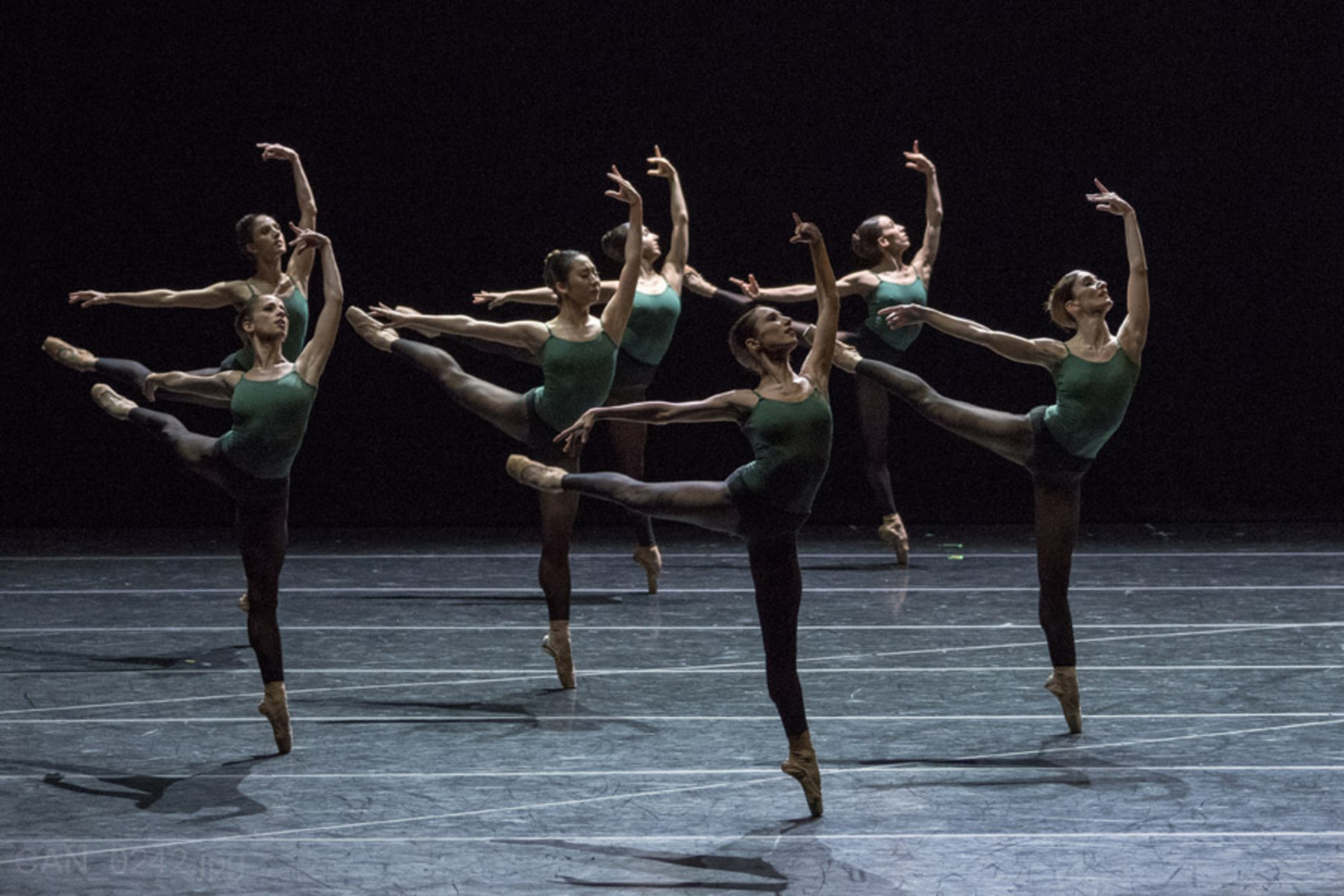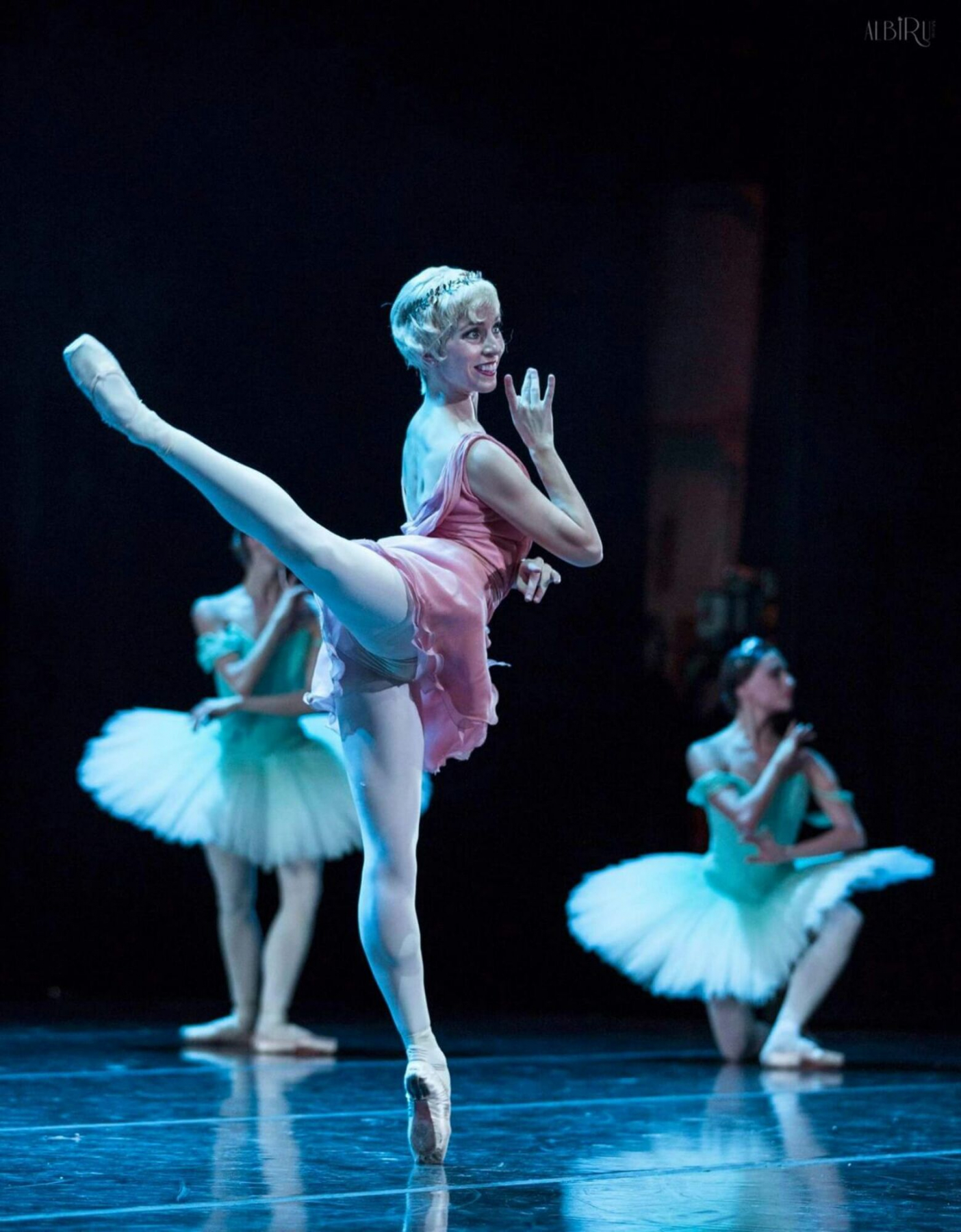Dancing around the world with María Muñoz
Happy Birthday!
María Muñoz was born in the village of Cabezo de Torres, in Murcia province. Her love for the arts and for dance began at a very tender age. She began her training at Murcia’s Professional Conservatory and later joined the Victor Ullate dance school, where she trained for five years. She has danced such iconic pieces as Don Quijote, Swan Lake and a number of choreographies by Forsythe, such asArtifact and In The Middle. After spending time in England and Germany she joined the CND in 2014 as part of the corps de ballet.

You start your training at Murcia’s Professional Conservatory at the age of ten. How do you remember that experience? Was dance a game at that time or did you already consider it a study that required discipline?
When I joined Murcia’s Professional Conservatory, my teacher throughout the course was Fuensanta Zomeño. She always instilled in us the idea of having fun with dance. My parents would take the weight off also; on doing tests, for instance, my dad would say, “well, don’t worry, this is a bit of fun.” But it’s also true that with time this discipline started shaping up and, of course, you, too, start taking on its importance. You start missing birthday parties; you always have dance practice. You have your responsibilities, your schedule your class plans for school.
You’ve also had spells studying abroad, like with the English National Ballet of the Semperoper Ballet Company of Dresden in Germany. How is dance lived in those countries? Within the classes themselves, did you notice any differences compared with Spain?
Absolutely. It’s like chalk and cheese. Before going to England, I studied five years with Víctor Ullate. That is a tough school, strict and disciplined, and making the switch to England was quite big surprise. The way they teach there seemed very sweet to me. I was used to hard, rigid classes, with a lot of tension … You couldn’t fall, you couldn’t let your leg lower, you couldn’t botch a pirouette … They were long classes, of two and a half hours. And then, suddenly, I’m in England where the classes are an hour and a half lone and, what’s more, they taught us different disciplines, even theory; something we just didn’t do with Victor. With Victor it was just classes of ballet practice, all of it classical, with pointes and all. The English way of teaching was much softer; it encouraged you … everything came from a positive and nice approach to dance. It was quite a shock for me and it took me a while to get used to those dynamics.
And then later, in Germany, I worked in the Semperoper, though my director was Canadian and nearly all the teachers were American, meaning that straight and structured German mentality didn’t come into it. They were well organised because the company admin and organisation were German, state-run, at artistic and technical level, and even the work with the teachers, was more natural.
You have performed in such iconic choreographies as Swan Lake, The Nutcracker or Don Quijote. What has that been like? Do they make you feel the pressure more than in other productions that are less known among the general public? Do they need any special preparation due to the demanding technical nature?
I think so, yes. You are watched more closely. As classics they are known by everybody. Whether or not you are dealing with a well-versed audience, everybody has seen a Swan Lake, everybody has seen a Nutcracker… Everybody has their own idea and image of how it should be. So, for me, yes, they’re more demanding. Sure, there are more open versions that afford you more wriggle room or to extend your creativity… but at the end of the day, the act blanc is pure line, pure structure, pure aesthetical beauty. It’s like that because it has to be like that and because everybody knows it is like that.
And talking of choreographies, which one do you remember with particular affection? And which was the most difficult or complicated?
I remember so many with a lot of affection. You just mentioned Swan Lake, which I hold particular affection for. I danced it in Dresden and it was one of my first classical productions there. It was set up super fast … in just two weeks, and it seemed so awesome; it was beautiful. The music, the stage set, the wardrobe … everything. The truth is I enjoyed it so much. “Quixote” has always been very important here, especially in the CND. And then, at a more personal level for me or for my personal development, Artifact or In the Middle; in fact all the Forsythe pieces, which we have danced quite a few of. I feel his pieces bring something different to dance per se. The possess such a technical richness and a wealth of sheer body expression; it’s and incredible exploration of the body. You get to discover things you didn’t know you had or which you could take in that direction, and I found that so valuable.
Balanchine’s Allegro Brillante was also difficult because it of its musical rigour which is very exact. But I have to say I really enjoyed it … mainly for that precision, the leg speed and the scope; it may only be 15 minutes long but you don’t stop. There are so many good moments … it starts tough from the outset because you start off running on stage and you finish saying “I’ve been to war and I made it; I’m alive.” You exit with your chest high. This ballet leaves you feeling “I’m immortal”.
The CND has done a lot of tours abroad. Which country have you liked the most? Do you have any travel adventure story to tell?
Of the most distant or outlandish tours we have done, I particularly remember the Abu Dabi one… It entailed a radical change because it is a country that has been created from nothing; it’s artificial. It is also true that when we go on tour we see the culture only up to a point… And this trip was just a week, about, meaning little time for us to mix much and, anyway, the city is very tourist oriented. . I really enjoyed the experience with the company, with my friends. We went to the beach and had a great time. The theatre was inside one of the richest hotels in the world … the conditions for us were just great.
And the one I liked most for its beauty was Mexico … and it was a short tour; a week or there abouts, but I loved it. China is also a curious country because it is so very different to our culture. But I wouldn’t live there for anything. And I wouldn’t go back of my own accord. So, yeah, I would go back to Mexico but China does not appeal.
On a personal level, what does dance mean to you outside work?
Dance imposes conditions on you. And you also assume them. Well, in the beginning you don’t because you are not aware of them. But as the years go by you realise just what you have got yourself into; you know what it implies; you know it puts conditions on what you eat, on your rest, on going out, on socialising … everything. It’s the price you pay … But for me it is all worth it, which is the most important thing. It’s not everybody’s cup of tea, of course, especially at this level. The more you put into it, the more it demands of you.
How are you approaching this new period in which you are going to be a mother? Do you plan to return after the nursing period? Do you think the body change will demand a lot of effort? Up to what stage of pregancy can you keep dancing?
I’m roughly at just over five months. I got pregnant in October and was pregnant throughout the entire Giselle programme in the Teatro de la Zarzuela. In the beginning, it’s like a chickpea and you can dance, no problem. But now there are things I cannot do; no impacts from the third month on, I can’t lift my legs so much, I can’t contract my abdomen, which means you lose your centre a bit in spins… The spine is no longer in line and the tummy is heavier than usual. As the pregnancy goes on, you can do less and less and your body tells you that. Your body has less physical oomph and you get much more tired. My idea is of course to return. In fact, one of my dreams is for my son watch me dancing, with me on stage and he being able to see me, fully aware, and for him to be enriched by this world of dance, of theatre, of art … It seems such a beautiful thing.
I’m not at all scared at how my body may be when I return… I’m young; I’m 28. There are people who recover super fast and, anyway, with breastfeeding, the uterus contracts helping you return to your old self quicker. I have also seen colleagues of mine who have become mothers and, on return, dance better than before. As I’ve not experienced that yet, I can’t tell you why it happens but maybe it’s that your life priorities change. Your child becomes the most important thing, I think, and so, as you don’t put so much intensity, so much pressure into certain things, you dance more relaxed; and to dance more relaxed helps you dance better. You find routes to places you would not reach if you were stiffer. I also think another factor, the biological factor, helps too. When you’re going to be a mother, your cells regenerate and you get stronger. There is a hormone, relaxin, which is produced at the early stages of pregnancy and remains for two years. It really helps to recover from injuries. My osteopath told me that.
I think it is a lovely experience. And also, when I dance in class, I notice how he moves and that is so amazing… We are both dancing!
Dance aside, are you into any other artistic disciplines in your own time?
Well, actually, I am, yes. When I was little, I painted a lot and a teacher persuaded my mum to sign me up for classes. The problem was it clashed with the conservatory so I couldn’t… I now do sculpture with “pasta das”, which is like clay but which doesn’t need wetting. I like the hands on contact with it; it’s a very physical contact.
To finish, and taking advantage of the fact today is your day, what is your favourite cake or birthday food?
I love creamy fritters, buñuelos; but the buñuelos my mum makes… my mum’s or my grandmother’s. I’m not big on cakes. I have a sweet tooth but I’m not a big cake fan… I’m crazy for buñuelos though; the buñuelo just with sugar, which is how they make them in my homeland, Murcia. What’s more, my birthday often coincides with Easter, which is when they are usually made, together with a dessert called paparajotes. I have memories of buñuelos on my birthday … This year, I’ll be making them myself.
MARÍA MUÑOZ – CORPS DE BALLET CND
Interview by: Sandra Cadenas









